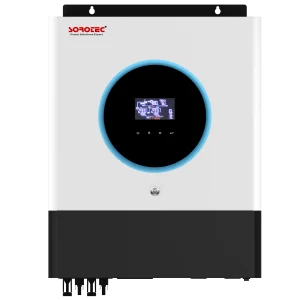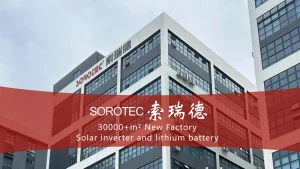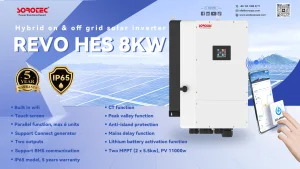Inverters are essential for converting DC power into usable AC power, but their efficiency, measured by the ratio of output to input power—determines their true performance. A high-efficiency inverter minimizes energy loss, reduces operational costs, and extends battery life, making it crucial for renewable energy systems, off-grid setups, and industrial applications. Factors like load conditions (optimal between 50-80% capacity), input voltage stability, temperature management, and standby power consumption significantly impact efficiency. Advanced inverters, such as those from SOROTEC, incorporate cutting-edge cooling systems, adaptive load handling, and low-resistance circuitry to maximize efficiency across varying demands. By understanding how to calculate and optimize efficiency—using metrics like conversion rates and real-world energy losses—users can select inverters that balance performance and cost-effectiveness, ensuring long-term reliability and energy savings.
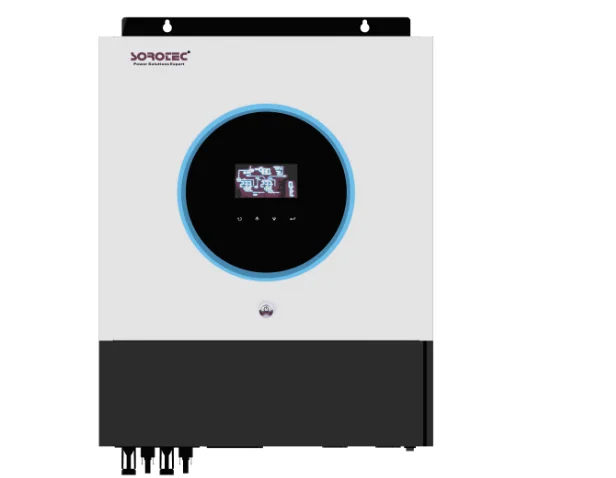
What Does Efficiency Mean in the Context of Inverters?
Effectiveness represents the relationship between energy delivered and energy received, shown as a percentage. It indicates how well a device changes direct current from sources like photovoltaic panels or accumulators into alternating current for equipment. Superior units keep energy waste low during this process.
Manufacturers typically rate effectiveness as a percentage. Consider this rating when determining appropriate device size for your needs.
Example: A unit rated at 90% effectiveness converts 90% of incoming energy to usable output. The remaining 10% dissipates as warmth or other forms of energy loss.
Why Is Measuring True Efficiency in Inverter Systems Crucial?
Accurate measurement matters because it immediately affects power usage and operating expenses. Higher-rated models conserve both energy and money over extended periods. They decrease unnecessary power loss and make energy storage last longer, perfect for standalone systems or sustainable energy arrangements. Additionally, proper measurements help engineers improve system operation and satisfy power requirements efficiently.
Which Factors Influence Inverter Efficiency?
How Do Load Conditions Affect Efficiency?
Usage levels greatly influence operation. Most devices work best at particular load ranges – usually 50-80% of maximum capacity. Functioning outside this range may increase losses because of internal electrical inefficiencies.
What Role Do Input Voltage and Output Voltage Stability Play?
Input voltage fluctuations can reduce inverter efficiency. Deviations from the optimal voltage range stress internal components, lowering performance. Stable output voltage ensures consistent operation for connected devices.
How Does Temperature Influence Performance Metrics?
Heat significantly affects operation metrics. Too much warmth can damage components or reduce their capability over time. This explains why premium units often include temperature regulation features like blowers or cooling fins to control operating heat.
What Are Methods to Calculate True Efficiency in Inverters?
What Is the Formula for Calculating Efficiency?
The fundamental equation is simple:
Effectiveness (%) = (Energy Out / Energy In) × 100
Why Analyze Input Power vs. Output Power?
Examining both energy values reveals conversion losses. For example:
Input: 1000W
Output: 900W
Effectiveness: (900/1000) × 100 = 90%
Should Real-World Losses Be Considered?
Yes, actual conditions like heat loss and idle power use should be included for precise results.
What Are Testing Procedures for Accurate Measurement?
Laboratory Testing Standards
Laboratory examinations use regulated settings where factors like heat and demand are carefully modified to assess operation under various circumstances.
Field Testing Scenarios
Field examinations mimic actual use by measuring effectiveness during normal operation. These account for real environment factors like temperature changes and demand fluctuations.
Explore premium options from industry leaders specializing in high-performance converters for various uses – from household systems to commercial-grade installations.
Key Performance Metrics for Evaluating Inverter Efficiency
Conversion Efficiency vs. System Efficiency
Primary conversion measures basic DC to AC transformation. This is vital because better conversion reduces energy waste, maximizing usable power. However, complete system effectiveness includes additional aspects like idle consumption and heat loss.
Top-quality devices successfully balance both measures. For example, units with ≥90% effectiveness minimize waste during conversion while maintaining economical long-term operation. Higher-rated models conserve both energy and finances over time.
Standby Power Consumption Analysis
Idle consumption refers to power used when devices are inactive. Often ignored, this significantly affects total operation, especially for continuously running systems. Advanced designs reduce these losses through improved electrical pathways that decrease internal opposition.
Choosing models specifically engineered to limit unnecessary idle power use leads to better savings and more dependable operation.
Peak and Partial Load Performance
Operation varies across demand conditions. Most devices perform best within particular ranges – typically 50-80% of maximum capacity. Operating outside these ranges increases internal energy loss.
Performance at lower demands is equally important, especially for systems with fluctuating needs. Modern devices automatically adjust to changing demands, maintaining steady effectiveness across various situations.
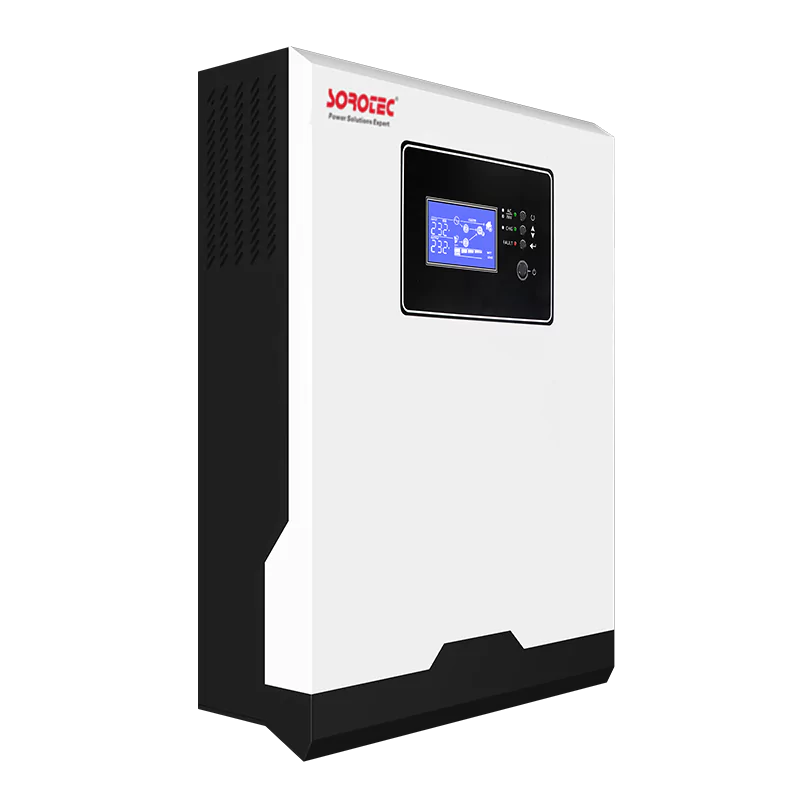
Analyzing SOROTEC Products for Optimal Efficiency
SOROTEC leads the field in advanced power conversion technology, providing unmatched energy transformation effectiveness through creative design and exact engineering. By combining specialized calculation methods, improved heat control, and reduced electrical resistance, their products maximize output while minimizing waste, guaranteeing excellent operation for both home and business uses. With an extensive selection thoroughly examined for dependability, they provide customized solutions that perform exceptionally under all demand conditions, establishing new benchmarks for performance, longevity, and economical energy transformation. Learn how these innovative converters can improve your power system’s operation and lifespan.
Highlighting SOROTEC’s Advanced Inverter Technologies
Features Enhancing Energy Conversion Rates
SOROTEC excels at creating high-effectiveness converters for various applications. Their products incorporate the latest technologies that improve DC-AC transformation rates while reducing losses from heat or electrical resistance. Using specialized calculation methods and premium components, these devices achieve industry-leading transformation rates.
Built-in Mechanisms to Minimize Losses
SOROTEC’s developments go beyond basic transformation. The converters include modern cooling solutions, strong heat regulation, and low-resistance electrical paths – all designed to decrease energy waste during use. These features guarantee longer energy storage life and reduced running costs over time.
Comparing SOROTEC Models Based on Efficiency Levels
The comprehensive product range serves both domestic and commercial needs, offering various sizes from small home units to large industrial systems. Each model undergoes strict testing to ensure top operation standards.
For example, mid-size models perform exceptionally under variable demands, ideal for changing environments. Meanwhile, large-capacity units maintain superior peak effectiveness for demanding commercial operations.
Recommendations for Choosing High-Efficiency SOROTEC Inverters
Selecting the right inverter requires careful consideration of application-specific demands. For residential users, SOROTEC’s compact, high-efficiency models deliver reliable performance for everyday power needs while optimizing energy savings. Industrial operations benefit from robust, high-capacity inverters engineered to maintain peak efficiency under heavy loads. Beyond immediate performance, SOROTEC’s solutions offer lasting value through reduced energy costs, extended battery life, and minimized maintenance – making them a smart investment for both homes and businesses. Discover how matching the perfect inverter to your unique requirements can transform your power management strategy.
Matching Specific Applications with Suitable Models
Residential Use Cases
For household setups with moderate requirements – like illumination, small devices, or workspace equipment – selecting converters with balanced peak and partial demand performance is crucial. Compact models with excellent idle effectiveness prove especially beneficial here.
Industrial Applications
Business environments need durable systems capable of handling heavy continuous demands without sacrificing effectiveness. Large-capacity models with advanced heat control systems work best here, ensuring consistent output under tough conditions.
Long-Term Benefits of Investing in SOROTEC’s Efficient Solutions
Investing in high-effectiveness solutions provides significant extended benefits:
- Lower power bills from reduced energy waste
- Prolonged energy storage lifespan
- Decreased maintenance costs due to durable construction
FAQ
Q1: How do I calculate inverter efficiency?
A: Use the formula: Efficiency (%) = (Output Power / Input Power) × 100. By comparing input and output power values, you can assess energy loss during conversion accurately.
Q2: What factors affect inverter performance most?
A: Key factors include load conditions (peak vs partial), input voltage stability, temperature variations, and standby power consumption.
Q3: Why choose high-efficiency models despite higher upfront costs?
A: High-efficiency models save on operational costs over time by reducing energy wastage and extending battery life significantly.


